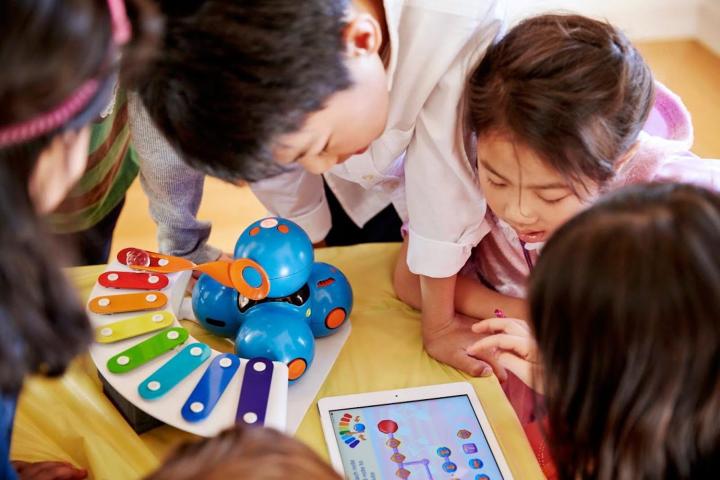
“It’s amazing to see the response of kids to our robots,” Vikas Gupta, co-founder and CEO of Wonder Workshop, told Digital Trends. “They’re very engaged and motivated, and they seem to be learning a lot.”

The Dash & Dot toy robots have been designed specifically for children. Gupta previously worked at Amazon and Google, but after leaving to spend more time with his kids he was struck by a burning question: Why aren’t there better toys for kids?
“Most toys get old in a few days,” he says. “We wanted to create an experience that stays fresh for a long time, where software can continue to introduce new elements.”
The robots have been designed to appeal to boys and girls. Dash can move, zooming around and sensing objects, while Dot is a stationary counterpart that can interact with Dash. Both can hear and respond to sounds and have lights. They can connect to Android and iOS tablets or phones via Bluetooth, and there are four simple apps that provide kids with an easy interface to send commands to the robots.
Children can program the robots to move around and interact. There are also accessories, such as a xylophone that Dash can be taught to play, and a smartphone mount that allows the robot to shoot video.
Wonder Workshop also has an API that’s in a closed beta right now, but the plan is to encourage the development of more apps that can work with the robots.
“We want to make it open for anyone who wants to tinker,” says Gupta.
The drive to get into schools came after Gupta’s realization that the American school curriculum isn’t doing enough to inspire kids to learn about computer science, math, and engineering. Programming is mandated as part of the curriculum for first graders in Estonia and for primary school students in the U.K., but in the U.S. it’s often not addressed until high school, if at all.
“The Wonder Workshop robots Dash & Dot have transformed the way my students learn about coding and computer science,” said Susan Prabulos, Meadow Lane Elementary technology teacher in Lincoln, Nebraska in a recent press release. “I believe computer science skills are essential for all students and a gateway to learning problem solving, computational thinking, creativity and persistence.”
The classroom packs offer discounts starting at 20 percent for schools, and there’s an ambassador program that allows schools to earn extra money through affiliate sales.
You can also buy robots for your kids directly from the Wonder Workshop website. Gupta says they have sold more than 20,000 across 20 countries already. If you want to buy a Dash robot for your little one, they start at $170. You can get Dash & Dot for $230, and there are various accessories ranging from $20 to $40.
We just got a review unit in, so if you’d like to know more, then stay tuned for a full review of the Dash robot.
Editors' Recommendations
- Telepresence classroom robots trialed for absent students
- Finishing touch: How scientists are giving robots humanlike tactile senses
- Researchers have built a flying, bird-inspired robot, complete with talons
- Watch Samsung’s clever home robot set the table and pour wine
- A disembodied robot mouth and 14 other 2020 stories we laughed at





